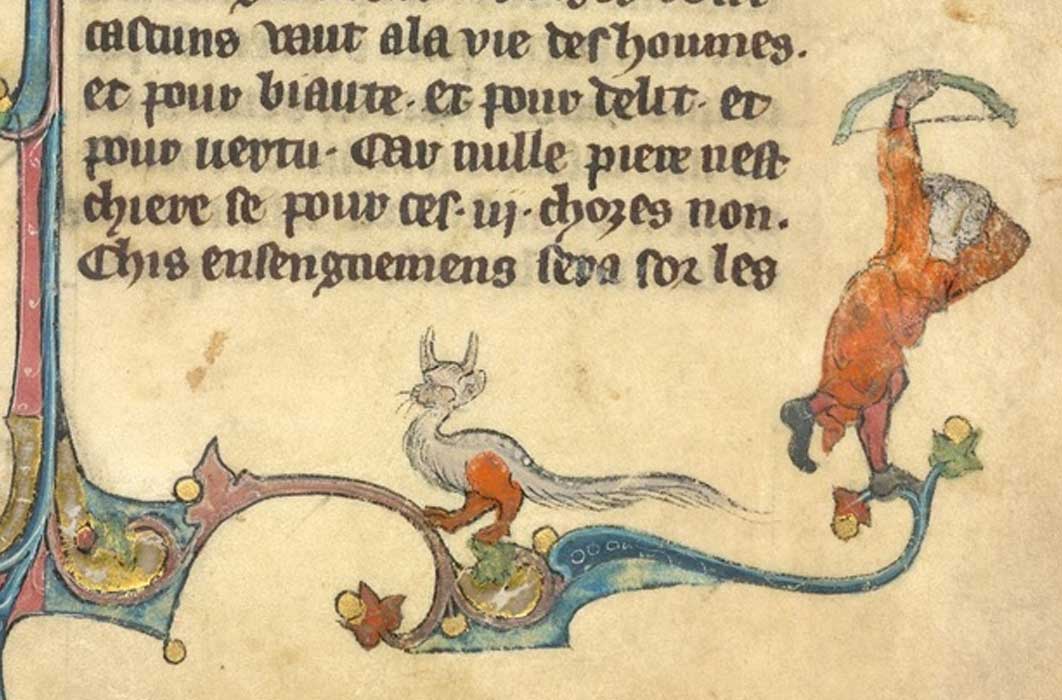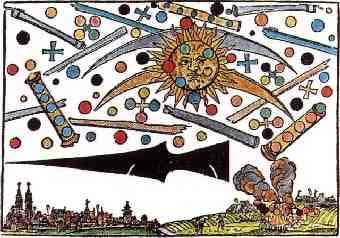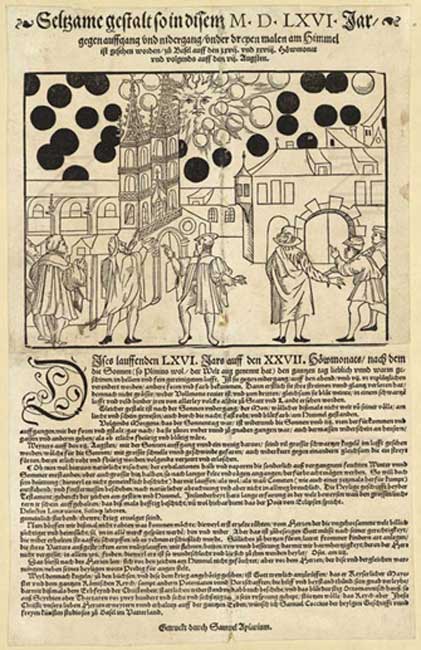
The Twisted Phenomena and Strange Features of Medieval Art
Why would knights be fighting snails? Medieval art is a complex weave of surreal, bizarre and sometimes disturbing imagery and artists took creative license to a whole new experimental level. With increased global traveling, reports of bizarre creatures and strange phenomena from the new-found lands grew more popular, but what exactly did people see out there in the mountains, oceans and skies that lead to some of mythologies’ most famous dragons, serpents and even UFO attacks?

Illustration of a winged, fire-breathing dragon. Friedrich Justin Bertuch (Public Domain)
Sky Phenomena: UFO Attack?
Medieval art presents some pretty bizarre phenomena in the skies, particularly illustrated in a woodcut by artist Hans Glaser depicting a: “sky filled with different shaped objects. Again there were disks. There were also long tubes, bulbous crosses, and arcing streaks.”

Prodigious event over Nuremberg, Germany on April 14, 1561. Hans Glaser woodcut (1566). While this is most often presented as a historical UFO sighting, scientists maintain these types of images are representations of Aurora borealis or Sun dogs (Parhelion). (Public Domain).
This woodcut depicted a scene that many thousands of eye-witnesses saw above Nuremburg where ‘tubes and crosses’ began to fight one another and shoot fire at each other. A broadsheet article published on April 14, AD 1561 describes a ‘mass sighting of UFOs’ by residents of Nuremberg who reported seeing: “objects of various shapes including crosses, globes, two lunar crescents, a black spear and tubular objects from which several smaller, round objects emerged and darted around the sky at dawn.” What is more, after this lightshow: ‘a large black triangular object’ appeared in the sky and crashed outside the city limits. The broadsheet also claims witnesses observed: “hundreds of spheres, cylinders and other odd-shaped objects that moved erratically overhead.”

In 1566, a similar celestial phenomenon was reported over Basel, Switzerland and The Basel Pamphlet describes “unusual sunrises and sunsets” and phenomena “fighting together” in the form of numerous red and black balls in the sky before the rising sun. (Public Domain).
So, if the sightings in Basel and Nuremberg were not alien visitors, what then did the people see in the sky? Surely this is beyond the realms of a mass hallucination? Military historians maintain that the tubes were cannons and the spheres were cannonballs, a theory which is supported in the black spearhead at the bottom of the scene, and, furthermore, in Glaser's own testimony he said: “the globes fought vehemently until exhausted”. Psychologist Dr Carl Jung in his 1958 book Flying Saucers: A Modern Myth of Things Seen in the Skies, analyzes the archetypal meaning of UFOs. Jung’s conclusion was that the spectacle was likely: “a natural phenomenon with religious and military interpretations overlaying it” and he added: “the images of four globes coupled by lines suggested crossed marriage quaternities and forms the model for the primitive cross cousin marriage.” He also suggested that it could have been: “an individuation symbol” because: “the association of sunrise suggests the revelation of the light”.




